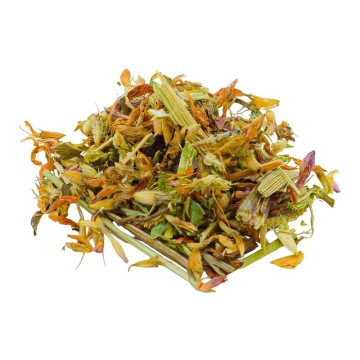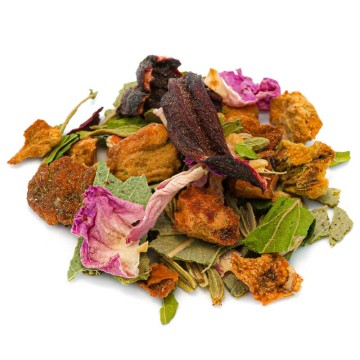Tussilago farfara is a plant of the daisy family, long cultivated and harvested for its medicinal properties.
Used as an herbal tea for respiratory congestion, coltsfoot has a balsamic effect for conditions such as sore throats, colds, and is also being researched as a soothing for inflamed joints .
Coltsfoot leaves: properties and benefits
This plant is often used as a natural remedy for inflammatory conditions due to colds, sore throats, asthma.
Coltsfoot can be a valid phytotherapy support to calm chronic cough and whooping cough, as an expectorant.
The expectorant action favors the expulsion of bronchial secretions (increases the secretion of phlegm from the bronchi and lungs) and partially reduces inflammation.
Also thanks to these actions, it helps against nasal obstructions.
By increasing the production of mucus, it facilitates the well-being of the respiratory tract, so that they do not become irritated when exposed to substances such as dust, smoke particles, etc.
The active component of coltsfoot is tussilagon, which appears to have natural anti-inflammatory, emollient and antioxidant properties.
The other bioflavonoids and active amino acids have also been useful in folk medicine to treat not only bronchitis and coughs, but also for gastric ulcers. < / p>
This is because the tussilage-type glycosides contained in coltsfoot are soothing for the mucous membrane tissue, in conditions such as chronic cough or bronchitis, but also for the digestive system. Some recent studies consider the calming beneficial properties for the treatment of intestinal inflammation.
It has also traditionally been used to soothe the symptoms of gout, a type of arthritis that causes swelling and pain in the joints.
Coltsfoot, in addition, has mild sedative properties that could relieve insomnia or anxiety caused by stress.
In recent times, it is being studied for its possible interactions with nerve cells, in order to protect them. Furthermore, the research also focuses on the historically exploited antineuralgic abilities to calm nerve inflammations.
Externally, the plant extracts are used to treat skin problems such as eczema, sores, ulcers and irritations.
Origins and History of cultivation
Tussilago Farfara is a plant native to Europe and western Asia, which now grows in many countries of the world, including in North Africa, eastern Russia, China and up to Svalbard islands.
It is a medicinal plant that can be found on hills, meadows, slopes, edges of woods. It is the leaves and flowering tops of the coltsfoot plant that are most used for medicinal use. The roots can also be used, dried for the infusion.
It is also popularly called babbling, coltsfoot or toxilinity, and its name derives from the historical use made of it in classical herbal medicine. Tussis (cough) and agere (to do, in the sense of removing), are the words that gave it its name.
In ancient times, in fact, coltsfoot was used to treat gout, relieve the body from flu and fever, and to treat tuberculosis.
Already in ancient Rome, Pliny the Elder spoke of it as a healing plant. Later it was also called coltsfoot from the Latin name farfarum, perhaps derived from farfer - bearer of flour - in reference to the white color of its down.
Plant and flowers
Tussilago Farfara is a perennial plant of the Asteraceae family - unique in the Tussilago genus.
Grows up to about 25 cm in various conditions on dry and humid soils, near streams or ditches.
It has a strong tap root, which allows it to survive periods of drought by storing water.
Its long leaves are oval (heart-shaped), and yellow flowers sprout from June to August in our hemisphere.
Coltsfoot nutritional values
The main components of this plantthey are mucilages, saponins, tannins, an essential oil, mineral salts (iron, zinc), some acids (malic, gallic, etc.), resins and alkaloids.
It also contains beneficial active ingredients such as flavonoids, known antioxidants, glucoside tussilagine, inulin and peptin.
How to use Coltsfoot leaves in herbal tea
The infusion of Farfara, is obtained by inserting in a cup (250 ml), about 3-5 grams of leaves in herbal tea cut with water at 100 ° C.
Leave to infuse for 5 to 7 minutes, before drinking the beneficial herbal tea for bronchi and cough.
Add honey or sugar if desired.
Coltsfoot: side effects and contraindications
Although coltsfoot may provide health benefits, there are rules about its safety, and it is necessary to maintain the correct doses.
The plant, in fact, contains pyrrolizidine alkaloids (PAs), compounds that can cause liver damage.
It is therefore a plant not to be taken during pregnancy or while breastfeeding, and not recommended for those suffering from liver disorders or pathologies.











 No reward points for this product.
No reward points for this product.














